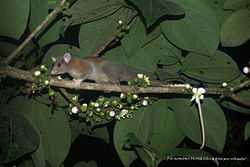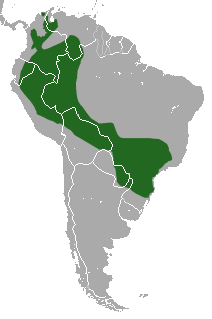| Brown-eared woolly opossum | |
|---|---|
 | |
| Scientific classification | |
| Kingdom: | Animalia |
| Phylum: | Chordata |
| Class: | Mammalia |
| Infraclass: | Marsupialia |
| Order: | Didelphimorphia |
| Family: | Didelphidae |
| Genus: | Caluromys |
| Subgenus: | Mallodelphys |
| Species: | C. lanatus |
| Binomial name | |
| Caluromys lanatus (Olfers, 1818) | |
| Subspecies | |
 | |
| Brown-eared woolly opossum range | |
| Synonyms [2] | |
List
| |
The brown-eared woolly opossum (Caluromys lanatus), also known as the western woolly opossum, is an opossum from South America. It was first described by German naturalist Ignaz von Olfers in 1818. The opossum is characterized by a brown to reddish brown coat and similarly colored limbs, yellow to orange underbelly, hairless, brown ears with a hint of pink, and a tail furred on the back for up to half of its length. The brown-eared woolly opossum is nocturnal (active mainly at night), solitary and omnivorous. The IUCN lists it as least concern.

